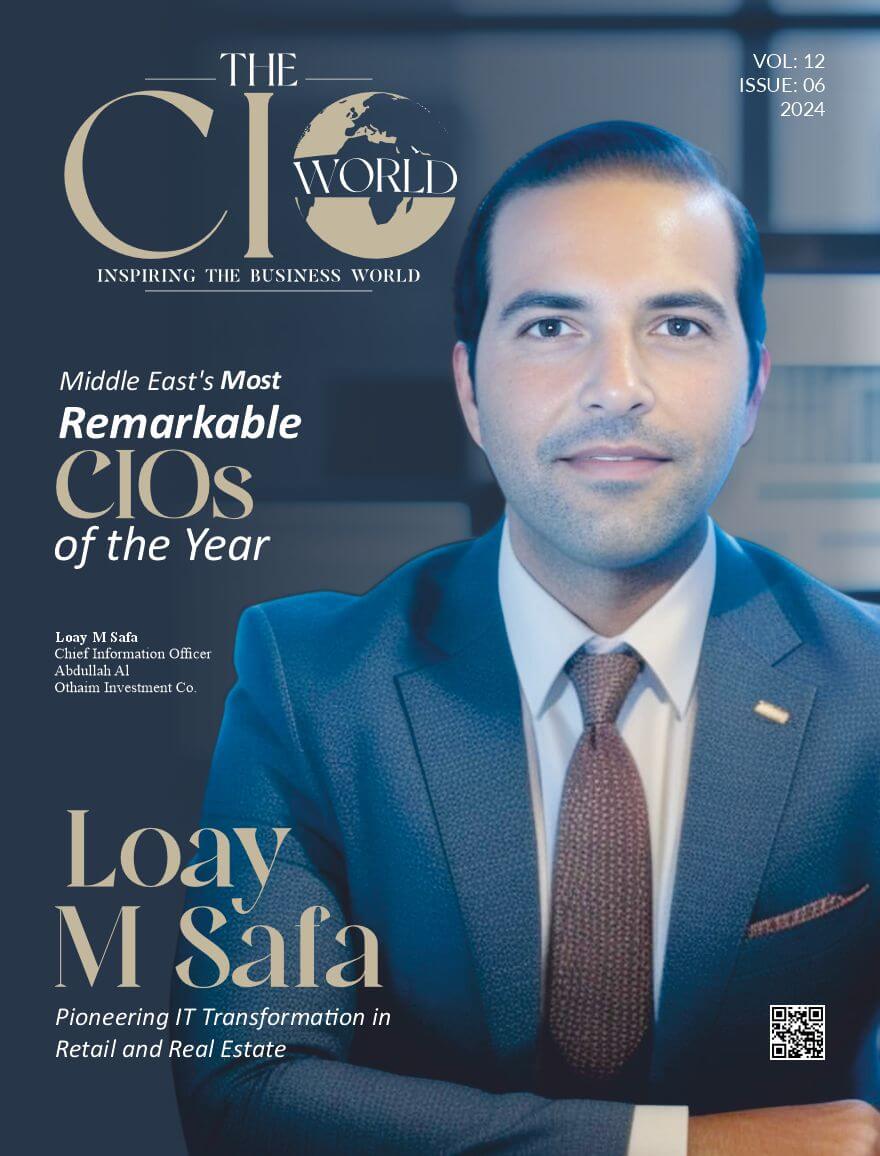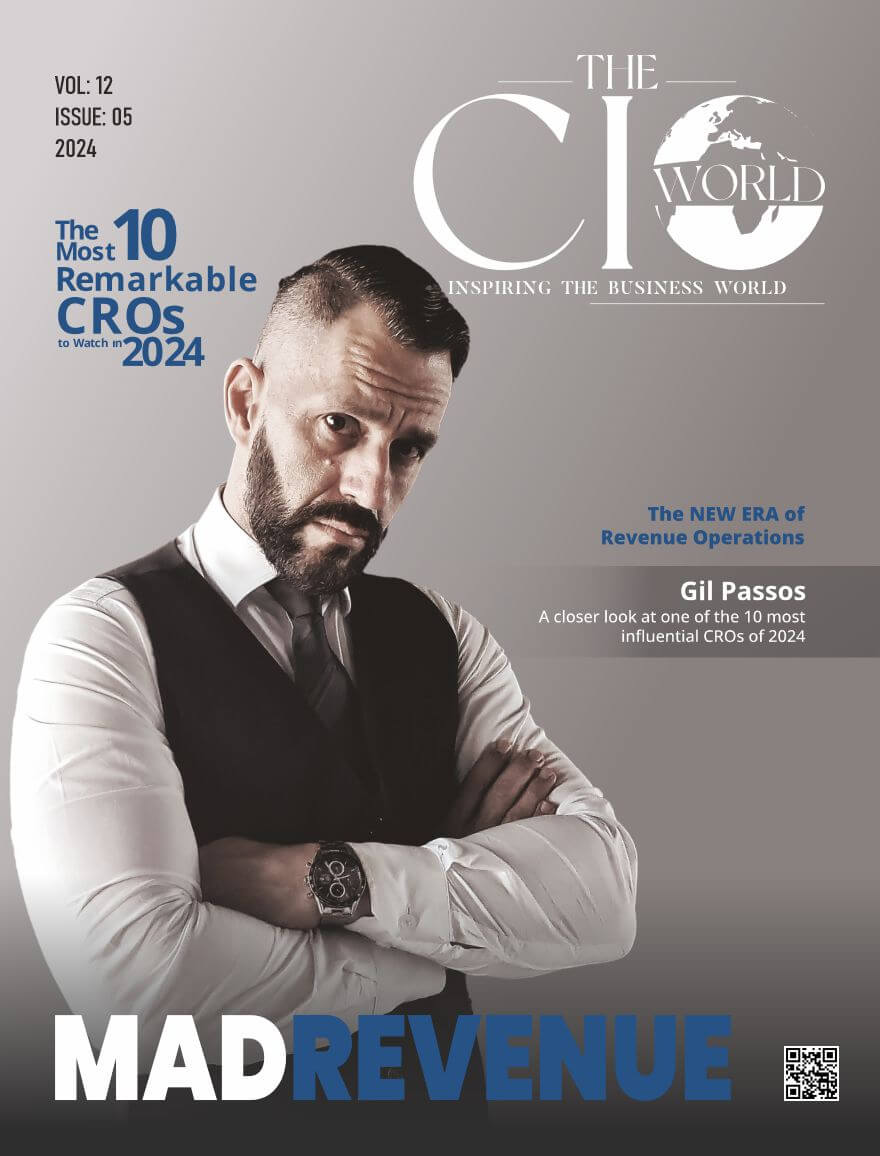A Tech Entrepreneur’s Transformation from Software Solutions to Unmanned Air Cargo!
Almost everyone dreams of flying when they’re young. Watching planes up in the sky is just magical, and it makes you imagine all the adventures you could have above the clouds.
It’s a familiar scene – a child, eyes wide with wonder, watching an airplane soar above. The dream of flying becomes a compelling force, drawing individuals to pursue a career in aviation. The sense of freedom and excitement propels enthusiasts to turn their childhood dreams into a profession.
Emre Balci, the Founder of Uçaksan Aircraft Systems, embodies the spirit of innovation and determination. His journey began in 1977 in Turkey, a country that has historically straddled the crossroads of tradition and progress. Emre’s own path reflects this duality as he transitioned from computer education to the cutting-edge intersection of aviation and technology.
In 2009, he embarked on a remarkable venture, establishing his software company, which quickly became synonymous with excellence. His team delved into corporate business solutions and undertook ambitious projects in Augmented Reality (AR), Mixed Reality (MR), and Artificial Intelligence (AI). The accolades and awards soon followed, underscoring their expertise in this dynamic field.
But Emre Balci’s story doesn’t stop at software. In 2018, a new chapter began with the founding of an aviation company. Their vision was bold yet clear: to design and manufacture their aircraft and unmanned aerial vehicles. Remarkably, they turned this vision into a reality. The drive and commitment that fueled their software success now fuel their ascent in the aviation industry.
The primary mission of Uçaksan Aircraft Systems is as ambitious as it is groundbreaking—to become a leading manufacturer in the unmanned air cargo transportation sector. In a world where e-commerce and rapid deliveries dominate the landscape, unmanned cargo planes represent the future. Emre believes this transformation will take place within the next decade, revolutionizing the way we think about air cargo and transportation.
Below are the highlights of the interview:
How has your background and passion for flying played a role in shaping the company’s mission and goals?
My passion for aviation and flying began in childhood. The desire to fly is every little child’s dream. These dreams compel you to invest in the field of aviation. Otherwise, it is an extremely challenging, laborious, exhausting, and slow-progressing sector. That’s why we established the aviation company with the earnings from our software firm. After establishing it, we encountered various challenges. Finding good and experienced personnel in this field is very difficult. Moreover, a worldwide pandemic has put us under immense pressure. But this passion compels you to overcome everything that comes your way.
Could you elaborate on the technology company that initiated the design process of the aircraft, and how it has influenced the company’s development?
First of all, we needed to have a goal. We started with the goal of designing a two-seater training aircraft. Creating a next-generation training plane was of utmost priority. This taught us how to design an aircraft. Subsequently, the production process began. For a new generation of aircraft, we had to use products from the latest material technology of today instead of traditional materials. We started producing our aircraft with carbon composites. This made the aircraft lighter and stronger at the same time. It was a very valuable experience for us. With the knowledge we gained, we started designing unmanned aerial vehicles.
Our goal was to facilitate the growth of the unmanned vehicle market in the civilian sector. With the information we gathered from aircraft design, the material engineering we learned in production, and our experience in software, we started manufacturing unmanned cargo aircraft. This know-how has become extremely valuable for our company. Now, we have set our sights on larger manned and unmanned aircraft.
What are the key elements of the long-established aviation tradition and know-how that characterize your aircraft production and design?
Our aircraft production and design are characterized by several key elements stemming from the long-established aviation tradition and know-how. Firstly, we prioritize safety above all else, adhering to rigorous standards and regulations set by international aviation authorities. Our designs integrate cutting-edge aerodynamic principles, ensuring optimal performance and efficiency. Moreover, we emphasize the use of advanced materials, leveraging the latest in composite technology to achieve a balance between durability, lightness, and strength.
Furthermore, we incorporate sophisticated avionics systems, integrating state-of-the-art navigation and communication technologies to enhance the overall functionality and safety of our aircraft. Additionally, our commitment to continuous innovation drives us to constantly explore and implement new advancements in propulsion systems, seeking to improve fuel efficiency and reduce environmental impact. Overall, our approach combines the time-honored practices of the aviation industry with a forward-thinking mindset, allowing us to deliver aircraft that are both reliable and technologically advanced.
Aviation is an unforgiving industry. A small mistake in the design of an aircraft can leave you stranded. Aviation is a path with no return. That’s why you must work with zero errors. You must be 100% committed to the rules and principles. This ensures that things move slower and are more controlled. While designing more innovative and technological aircraft, we still adhere to traditional aviation rules. Aerodynamics is our fundamental law.
Can you tell us more about the materials and technologies used in aircraft construction, particularly carbon composite, titanium alloy steel, and aviation aluminum?
Certainly, the choice of materials and technologies in aircraft construction significantly impacts the aircraft’s performance, durability, and safety. Here’s an overview of the key materials and their importance:
- Carbon composites: These materials are renowned for their high strength-to-weight ratio, making them indispensable for crafting lightweight yet sturdy aircraft structures. Carbon composites exhibit exceptional resistance to fatigue and corrosion, prolonging the aircraft’s overall lifespan. Their use contributes to enhanced fuel efficiency and reduced emissions, promoting more sustainable aviation practices.
- Titanium alloy steel: Titanium alloys are highly esteemed in the aerospace industry for their exceptional strength, corrosion resistance, and capacity to withstand high temperatures. Their lightweight nature, combined with their robustness, makes them ideal for critical components like landing gear, engine parts, and structural elements. Their resilience in extreme flight conditions ensures the aircraft’s overall safety and reliability.
- Aviation aluminum: Aluminum alloys have long been a staple in aircraft construction, valued for their favorable strength-to-weight ratio, corrosion resistance, and malleability. They find application in various structural components such as wings, fuselage, and other exterior parts. Incorporating aviation-grade aluminum aids in reducing overall aircraft weight while upholding structural integrity and performance standards.
By integrating these advanced materials into the manufacturing process, aircraft manufacturers can ensure the production of technologically advanced and efficient aircraft that adhere to the stringent safety and performance standards of the aviation industry. Our aircraft, constructed entirely from carbon composites, is five times stronger and twice as rigid as steel of equivalent strength, yet it is approximately five times lighter in weight.
Understanding the paramount significance of weight in aviation, we built the aircraft’s frame system from titanium alloy steel, ensuring superior strength and lightness. Similarly, our utilization of lightweight aluminum has enabled us to obtain stronger materials. As we place significant emphasis on next-generation material engineering, we anticipate a future transition of passenger aircraft to carbon composites. The recent trend towards carbon composites in electric vehicles highlights the increasing importance of power and lightness in modern engineering endeavors.
The company is involved in producing light aircraft compliant with EASA-VLA. Could you provide examples of the specific purposes these aircraft are designed for, such as flight school, aerial spraying, and monitoring fire-prone areas?
Our aircraft are specifically designed for flight schools to train and nurture aspiring pilots. Each product is designed for use by two pilots, ensuring optimal training opportunities. Our trained pilots can subsequently pursue careers as pilots in large passenger aircraft or military fighter jets. The aircraft’s top-wing configuration, robust structure, and aerodynamics are also tailored for agricultural spraying purposes. Its ability to maneuver swiftly is a crucial feature, while the strong wing and tail structure ensure a smooth and comfortable flight experience. The broad wing structure allows for extended gliding, enabling longer flight durations.
How does the company manage minor and major repairs of aircraft by other manufacturers under their approval, and what is the extent of these repair services?
Since our company is an aircraft manufacturer, most of the critical components are produced in our own facilities. We are also capable of producing composite parts in the desired shapes and sizes. All of these are manufactured in compliance with EASA and FAA standards. All the products and components we use are approved by relevant authorities. Additionally, with approvals from relevant manufacturers, all aircraft are made flight-ready and maintained.
By maintaining a commitment to excellence and strict adherence to industry standards, our company provides comprehensive and reliable repair services for various aircraft models, guaranteeing the highest level of safety and performance for our clients.
Your company also produces Unmanned Aerial Planes (UAVs) for cargo purposes. Could you elaborate on the application and significance of these UAVs in the industry?
We anticipate that unmanned cargo aircraft will transform the e-commerce sector. Our prediction includes same-day delivery, made possible by a robust logistics system. The challenge lies in intercity and interstate transfers, which come with cost implications. To address this future challenge, we design and manufacture unmanned cargo aircraft, particularly for long-distance product transportation. These aircraft bridge the gap between cities and states, making same-day order and delivery a reality. Initially, this will begin with transporting medical supplies and valuable products autonomously, reducing costs and increasing delivery speed. We’ve even initiated a collaboration with one of the world’s largest cargo companies to develop larger UAVs capable of long-range flights and carrying a minimum of 1 ton of cargo. This innovation is poised to reshape the industry and further fuel the growth of the e-commerce sector.
What role does the UAV play in transporting civilian medical supplies, valuables, and other products between regions, and how does it operate?
The UAVs we’ve prepared have the ability to land on any type of terrain (e.g., soil, grass, etc.). For instance, in a scenario where urgent medical supplies are required in a certain area, you can load them onto the UAV system and lift them off within approximately 15 minutes, which is faster compared to traditional aircraft. Moreover, the cost will be significantly lower. They fly with minimal electronic systems and software. UAVs do not deviate from their designated route; they do not make decisions. This ensures they remain entirely focused on their mission. In cases where delivery needs to be made to a mountainous or inaccessible area, the UAV can drop its cargo with a parachute before returning to its mission base. With minimal operational staff, you can manage larger cargo operations. This is particularly ideal for operations in areas where ground transportation is challenging and risky.
What are the company’s future plans and aspirations in the field of aviation and aircraft development?
Our current objective is to expand the reach of our training and general-purpose aircraft and bring our unmanned cargo aircraft to the desired operational level. With the revision of aviation regulations for UAVs, we will be able to conduct operations more smoothly. Subsequently, we aim to develop regional passenger aircraft and UAV systems capable of carrying heavier loads. Our goal is to produce next-generation aircraft with lower operational costs and affordable operations. To achieve this, we will provide training to cultivate personnel capable of managing unmanned aerial vehicle operations. By investing in the development of both our technology and human resources, we are dedicated to driving innovation and advancement in the aviation industry.
Please feel free to add any other additional details that we might have missed out on or that you want to highlight in the article.
Our world is changing. Everything is progressing rapidly, and the aviation industry is striving to keep pace with this evolution. We aim to foster an innovative approach without relinquishing traditional principles. Leveraging our experience in software, we aspire to make aircraft smarter and more adaptable. Achieving this goal necessitates a trained workforce and increased investment from business leaders dedicated to this sector. Particularly, we eagerly welcome experts from the software industry to contribute to our endeavors, as we anticipate advancements in artificial intelligence, data analytics, and autonomous systems to be some of the hot topics in the field of aviation. These technologies will enable us to enhance safety, efficiency, and sustainability within the aviation industry, contributing to the transformation of air transportation as we know it.







